The eclecticism of British Columbia, Canada, from the fit-for-foodies dining scene of Vancouver, Canada and the idyllic setting of the Gulf Islands just a short flight away, to the provincial charm of nearby Victoria on Vancouver Island and the warm and sun drenched Okanagan Valley and Similkameen Valley, not to mention the breathtaking natural landscape all around, make British Columbia, Canada not only a wine lover’s but a traveller’s destination. Maybe it is British Columbia, Canada’s affiliation with Great Britain in both history and name. Or the fact that much of the wine produced is consumed domestically. Whatever it is, one thing is certain; British Columbia, Canada is not known as wine making country.
But British Columbia, Canada is a wine producing region. And a good one at that. It has its own geographical indications and measures of quality. It also has its own varietals and methods of cultivation on a variety of soils. Add a picaresque backdrop of verdant fields and rolling hills and this is definitely wine country worth visiting.
California helped put The United States on the quality wine map and Oregon and Washington State are currently all the buzz. British Columbia, Canada is further North and a country away from these regions, but despite the border between them, essentially neighbors.
So it is not surprising to find some similarities between them. British Columbia, Canada like California, is characterized by microclimates. Its terroir is considerably varied and this helps to give its five wine making regions of Vancouver Island, the Gulf Islands, Fraser Valley, Similkameen Valley and the Okanagan Valley very different wine styles. White wine varieties including Pinot Gris, Pinot Blanc, Riesling, Gewürztraminer, Chardonnay, Sauvignon Blanc and Viognier, along with pest and disease resistant Blattner grapes, such as Petit Milo and Sauvignette that were conceived of by Swiss scientist and agriculturalist Dr. Becker, are all grown in varying amounts within these areas. Red wine varietals such as Cabernet Sauvignon, Merlot, Cabernet Franc, Pinot Noir, Syrah, Cabernet Franc and Gamay are also harvested within these regions.
However, unlike California, there is no one particular British Columbia, Canada style of wine that is usually attributed to the region. White wines share an underlying theme, but red wines vary considerably, even within a region. If Canada is currently known for any kind of wine it is probably ice wine. The sweet orchard fruit and honey flavors and soft silky finish of this dessert wine is believed by many wine drinkers and even some wine connoisseurs to be the only quality wine produced in Canada. Ice wine is an important element of the Canadian wine industry but by no means the only type of well crafted wine produced in Canada. In British Columbia, Canada, like anywhere else, white wine grapes can be made into many different styles of wine and the five wine producing regions of British Columbia, Canada proved exactly that.
The stately châteaus and centuries of wine production history found in the Old World vineyards of Western Europe do not exist here. But many British Columbia, Canadian vineyards, like some from the Old World, are family owned. Wine making traditions are gradually being established as vineyards are passed from first to second generations.
The aesthetics of the wine estates in British Columbia, Canada take on an industrial meets eco-friendly style. Airy wood, glass and steel are the preferred architectural components. Vineyard buildings blend in with their surroundings in an environmentally harmonious combination. A vineyard with a two generation family history of wine production is considered venerable in British Columbia, Canada and the wine approach and philosophy is one that encourages experimentation.
A vineyard owner might decide to plant a few blocks of an untried grape that had previously never been introduced into the soil to see if it will thrive. Therefore, a block of Gruner Vietliner might exist between blocks of Sauvignon Blanc and Chenin Blanc. There is no established precedence and none of the encumbering rules that tradition sometimes brings to limit the types of grapes that are planted.
Pretty much anything goes, and it is the land and the environment, as well as the ability of the wine producer to work within the boundaries of what the land can yield, that dictate the kinds of wines each producer makes.
Go from the bustling, diverse and eclectic city center and dining scene of British Columbia, Canada, to the quaint coastal village of Salt Island within the Gulf Islands. A 12 minute flight by float airplane is all it takes. Discover local cheeses, preserves, jams, jellies and spreads, as well as wines within a countryside where chickens, goats and sheep wander freely in small farms. The floral and fruity sparkling and white wines comprised of locally grown Blattner grapes are great for picnicking on summer days at this popular weekend getaway vacation spot.
Gulf Island wine producers like Salt Spring Winery(http://www.saltspringvineyards.com) 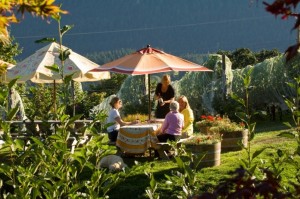
and Mistaken Identity Vineyards (http://www.mivwine.ca) use sustainable and organic methods to produce their fresh and fruity wines. You will find that their wines can be reminiscent of aromatic off-dry Rieslings with ripe peach and apricot notes.
And what better complement to Gulf Island wines than local cheeses? The mild and creamy goat cheeses from nearby Salt Spring Island Cheese and Moonstruck Cheese and Gulf Island wines make great pairings. Soft and aromatic summer fruitiness and slightly savory and sweet merge to create a balanced combination.
Canadian wine producers initially planted hybrid grapes because they did not think they could grow international varietals on their soil. However, in the 1990s, the Canadian government gave winemakers incentives to plant international grapes and thirteen varietals thrived. Wines produced from these grapes are now subject to designations, depending on specific production methods and levels of quality, much like some wines crafted in the Old World.
The coastal town of Crofton in Vancouver Island is nearby but, like the other regions of British Columbia, Canada, offers something unique of its own. Surrounding Cowichan Bay affords the opportunity for boating, fishing and sailing, or simply wiling away the day by the water. You can also explore wineries such as Unsworth Vineyards (http://www.unsworthvineyards.com), along with tea farms offering floral, fruity and herbal, organically grown teas.
 The sparkling wines made from indigenous hybrid, Riesling and other grape varieties, and produced using the Charmat Method (the same process used to make Prosecco), tend to be fresh, lively and full of summer fruit and citrus notes.
The sparkling wines made from indigenous hybrid, Riesling and other grape varieties, and produced using the Charmat Method (the same process used to make Prosecco), tend to be fresh, lively and full of summer fruit and citrus notes.
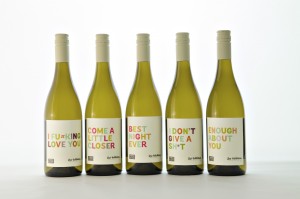
Do not miss a visit to Church and State Winery (http://churchandstatewines.com) near Victoria if you are looking for a taste of not only Vancouver Island wines, but a preview of some of the wine styles you will find in Okanagan Valley, British Columbia, Canada’s foremost wine producing region. Church and State Winery is Vancouver Island’s largest winery and produces grapes in both Vancouver Island and the Okanagan Valley. The style of its wines range from crisp and citrus, and floral and fruity, stainless steel fermented whites, to fruit forward and well rounded, and bold and robust, oak-driven reds.
The Vancouver Island sea breeze gives way to a considerably drier and warmer landscape in the Okanagan Valley. Surrounded by mountains, the Okanagan Valley produces over 80 percent of the wines made in British Columbia, Canada. The climate and terroir are conducive to wine making. Complex and full-bodied, as well as soft and subtle whites, and bold and earthy, along with fruit driven and vivacious reds, are all produced here depending on each winemaker’s style.
 At a little over four decades old, Gray Monk Estate Winery (www.graymonk.com) is the Okanagan Valley’s oldest family-owned and run vineyard. The Gray Monk Odyssey Brut blend of Riesling and Pinot Blanc, produced using the Methode Champenoise, is refreshing, crisp and full of citrus, apple and almond notes.
At a little over four decades old, Gray Monk Estate Winery (www.graymonk.com) is the Okanagan Valley’s oldest family-owned and run vineyard. The Gray Monk Odyssey Brut blend of Riesling and Pinot Blanc, produced using the Methode Champenoise, is refreshing, crisp and full of citrus, apple and almond notes.
 If there is one vineyard that stands among the forefront of British Columbia, Canadian wine making, then it is Quail’s Gate Winery (www.quailsgate.com). The Winery celebrates its twenty fifth anniversary this year and its delicate and complex, single vineyard, stainless steel fermented Alsatian style Gewürztraminer is brimming with lychee, white flower and honeysuckle, as well as citrus notes.
If there is one vineyard that stands among the forefront of British Columbia, Canadian wine making, then it is Quail’s Gate Winery (www.quailsgate.com). The Winery celebrates its twenty fifth anniversary this year and its delicate and complex, single vineyard, stainless steel fermented Alsatian style Gewürztraminer is brimming with lychee, white flower and honeysuckle, as well as citrus notes.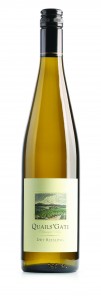 The Quail’s Gate collection of Rieslings range from a 2014 with fine notes of lemon zest and citrus, and a 2007 with expressive lemon notes, a pronounced but well rounded acidity and a soft and slightly silky finish, to a 2005 showing honey and ripe summer fruit notes and floral aromas that recalled a late harvest Riesling, and a 1995 vintage that is mellow, subtle and elegant with sweet ripe orchard fruit notes.
The Quail’s Gate collection of Rieslings range from a 2014 with fine notes of lemon zest and citrus, and a 2007 with expressive lemon notes, a pronounced but well rounded acidity and a soft and slightly silky finish, to a 2005 showing honey and ripe summer fruit notes and floral aromas that recalled a late harvest Riesling, and a 1995 vintage that is mellow, subtle and elegant with sweet ripe orchard fruit notes. At Cedar Creek Estate Winery (www.cedarcreek.bc.ca), where “Our Wine is Our Word,” varietals are meticulously matched with their plots to ensure that any wine produced from a given grape is grown out of the soil best suited for it.The Cedar Creek Estate Winery, Erhenfelser, 2013 is a delightful and delicate selection, characterized by an aromatic honey nose, orchard fruit notes and a silky finish.
At Cedar Creek Estate Winery (www.cedarcreek.bc.ca), where “Our Wine is Our Word,” varietals are meticulously matched with their plots to ensure that any wine produced from a given grape is grown out of the soil best suited for it.The Cedar Creek Estate Winery, Erhenfelser, 2013 is a delightful and delicate selection, characterized by an aromatic honey nose, orchard fruit notes and a silky finish.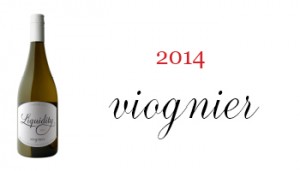 The picaresque backdrop is enough reason to come to Liquidity Wines (http://liquiditywines.com) and good wine and food only enhance the experience. Overlooking lakes Vaseux and Skaha, Liquidity Wines is the go to spot for creative food and wine pairings. The hand harvested and French oak barrel-aged Liquidity, Viognier, 2013 is full of ripe peach and dried apricot notes, as well as a hint of spice.
The picaresque backdrop is enough reason to come to Liquidity Wines (http://liquiditywines.com) and good wine and food only enhance the experience. Overlooking lakes Vaseux and Skaha, Liquidity Wines is the go to spot for creative food and wine pairings. The hand harvested and French oak barrel-aged Liquidity, Viognier, 2013 is full of ripe peach and dried apricot notes, as well as a hint of spice.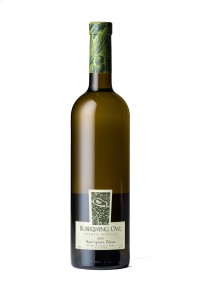 For instance, Burrowing Owl Winery employs a gravity flow system of grape processing that helps to limit the amount of mechanical intervention that is necessary during wine production. Burrowing Owl Winery winemaker Sophie Laurent, a French ex patriate, was lured by the prospect of producing wines in this region and once she came she found that it was ideal for producing the wines she wanted with the quality and expression she intended. Some of the results of her efforts include a crisp Burrowing Owl, Sauvignon Blanc, 2013 with lemon zest, passion fruit and vanilla notes.
For instance, Burrowing Owl Winery employs a gravity flow system of grape processing that helps to limit the amount of mechanical intervention that is necessary during wine production. Burrowing Owl Winery winemaker Sophie Laurent, a French ex patriate, was lured by the prospect of producing wines in this region and once she came she found that it was ideal for producing the wines she wanted with the quality and expression she intended. Some of the results of her efforts include a crisp Burrowing Owl, Sauvignon Blanc, 2013 with lemon zest, passion fruit and vanilla notes.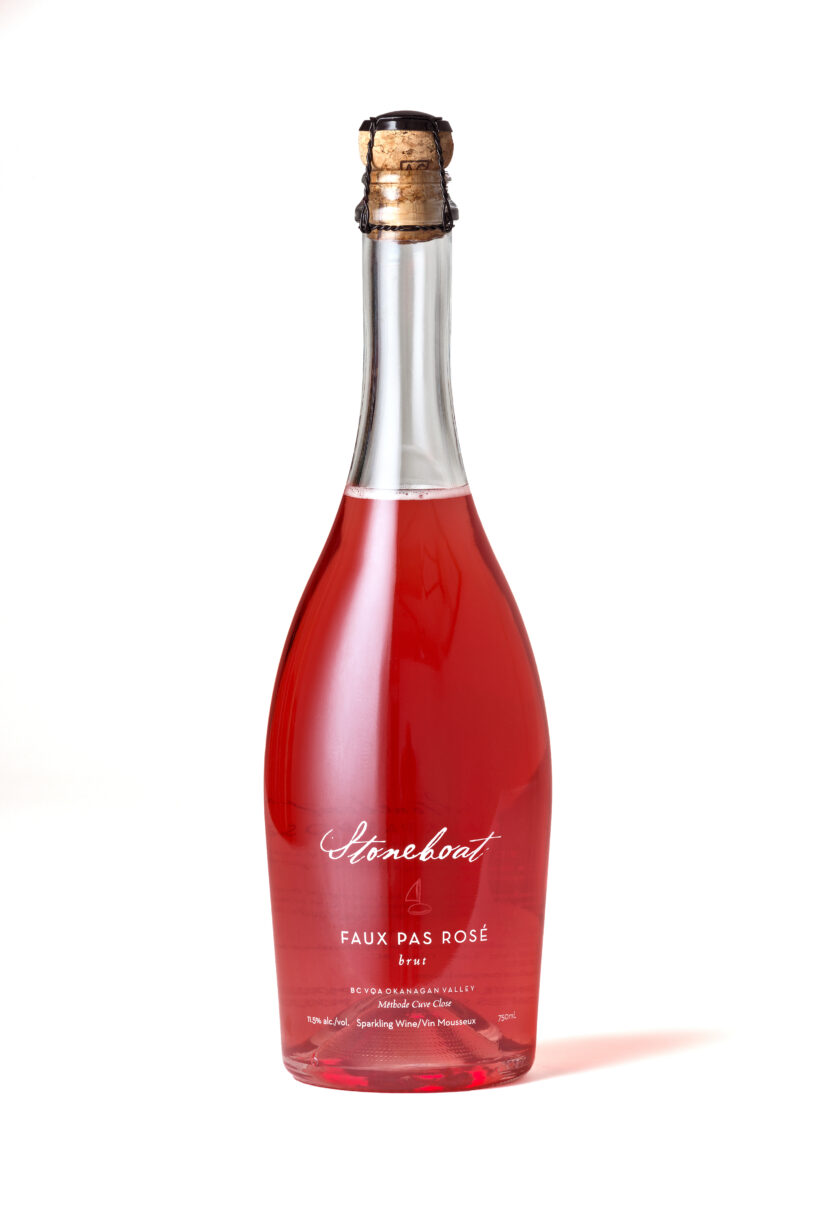 Stoneboat Winery offers a Stoneboat Faux Pas Rosé Brut that is lively and full of effervescence, as well as cherry and strawberry notes.
Stoneboat Winery offers a Stoneboat Faux Pas Rosé Brut that is lively and full of effervescence, as well as cherry and strawberry notes. The cold, stainless steel fermented TIME Estate Sundial, 2013 blend of Pinot Blanc, Chardonnay, and Sauvignon Blanc with fresh melon, peach, and green apple notes is among the well-crafted selections that put TIME Winery on the quality British Columbia, Canadian wine making map.
The cold, stainless steel fermented TIME Estate Sundial, 2013 blend of Pinot Blanc, Chardonnay, and Sauvignon Blanc with fresh melon, peach, and green apple notes is among the well-crafted selections that put TIME Winery on the quality British Columbia, Canadian wine making map. Most of the vineyards in British Columbia, Canada make white wines from varietals including Sauvignon Blanc, Chardonnay and Riesling. But for a British Columbia, Canadian take on Gruner Veltliner, a visit to Culmina Winery (http://www.culmina.ca) is not to be missed. The owner, an avid collector of antiques and vintage glassware, produces one of the only Gruner Veltliners in the region. The Unicus, Culmina Family Estate Winery, Gruner Veltliner, 2015 is crisp, refreshing and pure, with good acidity and a zesty lemon nose, as well as citrus fruit and slightly herbaceous notes.
Most of the vineyards in British Columbia, Canada make white wines from varietals including Sauvignon Blanc, Chardonnay and Riesling. But for a British Columbia, Canadian take on Gruner Veltliner, a visit to Culmina Winery (http://www.culmina.ca) is not to be missed. The owner, an avid collector of antiques and vintage glassware, produces one of the only Gruner Veltliners in the region. The Unicus, Culmina Family Estate Winery, Gruner Veltliner, 2015 is crisp, refreshing and pure, with good acidity and a zesty lemon nose, as well as citrus fruit and slightly herbaceous notes. Many British Columbia, Canada vineyards are family owned. However, there is one vineyard that came claim indigenous tribal origins. British Columbia, Canada is home to the only winery that is owned by aboriginal people in North America. At NK’ Mip (pronounced in-ka-meep) Cellars (www.nkmipcellars.com), wines are given aboriginal language appellations and both the history and culture of these people are celebrated in every vintage. The Mer’r’iym (Meritage) series represents the vineyard’s finest vintages. Well balanced and full of ripe red fruit, this collection is a great candidate for aging and will evolve in complexity in years to come.
Many British Columbia, Canada vineyards are family owned. However, there is one vineyard that came claim indigenous tribal origins. British Columbia, Canada is home to the only winery that is owned by aboriginal people in North America. At NK’ Mip (pronounced in-ka-meep) Cellars (www.nkmipcellars.com), wines are given aboriginal language appellations and both the history and culture of these people are celebrated in every vintage. The Mer’r’iym (Meritage) series represents the vineyard’s finest vintages. Well balanced and full of ripe red fruit, this collection is a great candidate for aging and will evolve in complexity in years to come.

 If there is any question as to whether or not the climate in British Columbia, Canada can produce wines of Old World quality, then Clos du Soleil Winery (www.closdusoleil.ca) is one Similkameen Valley wine producer that proves it can and does do precisely that. Clos du Soleil Vineyards represents the realized goal of a New York City scientist turned winemaker who wanted to make wine well before he was old enough to drink it. At ten years old he was already reading the finer points of producing wine and finally decided, decades and a lucrative career later, to pursue his lifelong aspiration. The Clos du Soleil, Capella, 2013 Bordeaux style blend of Sauvignon Blanc and Semillon, is elegant and refined, with notes of ripe lemons, grapefruit and summer peaches.
If there is any question as to whether or not the climate in British Columbia, Canada can produce wines of Old World quality, then Clos du Soleil Winery (www.closdusoleil.ca) is one Similkameen Valley wine producer that proves it can and does do precisely that. Clos du Soleil Vineyards represents the realized goal of a New York City scientist turned winemaker who wanted to make wine well before he was old enough to drink it. At ten years old he was already reading the finer points of producing wine and finally decided, decades and a lucrative career later, to pursue his lifelong aspiration. The Clos du Soleil, Capella, 2013 Bordeaux style blend of Sauvignon Blanc and Semillon, is elegant and refined, with notes of ripe lemons, grapefruit and summer peaches.


Be First to Comment